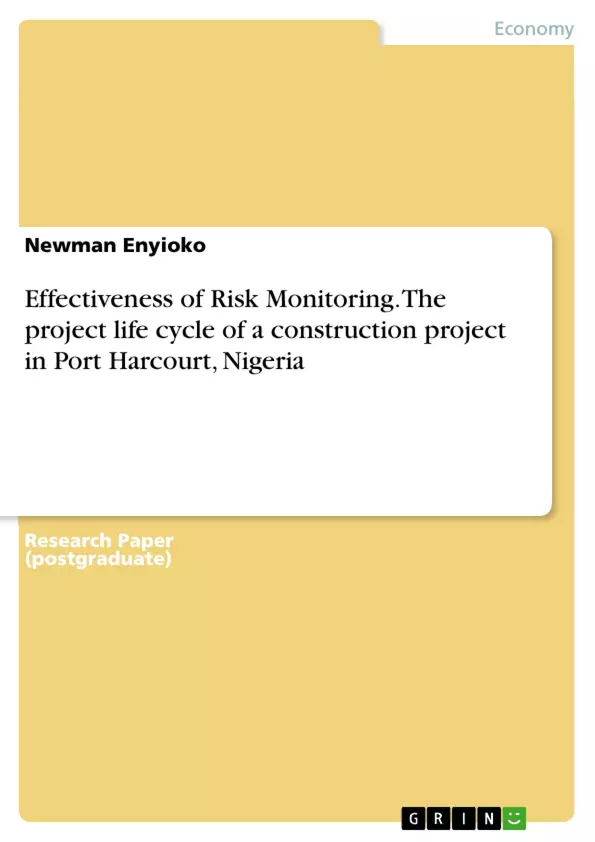The paper evaluated the effectiveness of risk monitoring through the project life cycle of a construction project of a shopping center in Port Harcourt.
In line with this need, this paper established a system to improve the time, cost and quality performance of building construction projects in developing countries through a comprehensive risk management model that ensures that the expectations of clients are met. To achieve the aim of this paper, a mixed methodological approach was adopted.
Through the review of literature, a conceptual risk management framework suitable to elaborate risk assessment of building construction projects especially for developing countries was developed. The result showed the interrelation between the risk factors and how they contributed to cost and time overruns as well as quality problems.
Inhaltsverzeichnis (Table of Contents)
- Introduction
- Literature Review
- Research Methodology
- Results
- Summary...
- Conclusion...
- Recommendations
- References
Zielsetzung und Themenschwerpunkte (Objectives and Key Themes)
This paper evaluates the effectiveness of risk monitoring throughout the project lifecycle of a shopping centre construction project in Port Harcourt, Nigeria. It aims to establish a system for improving time, cost, and quality performance of building construction projects in developing countries through a comprehensive risk management model that meets client expectations.
- Risk management in construction projects
- Identifying critical risk factors impacting cost, time, and quality
- Assessing the effectiveness of risk monitoring
- Developing suitable risk responses and recommendations
- The application of risk management in developing countries
Zusammenfassung der Kapitel (Chapter Summaries)
- Introduction: This chapter introduces the significance of construction projects in developing economies, specifically focusing on the Nigerian construction industry. It highlights the challenges and risks associated with construction projects and the importance of effective risk management for project success.
- Literature Review: This chapter delves into the concept of construction risk management, defining it as a crucial element of project management. It explores various definitions of risk management, its benefits, and its role in achieving project objectives. The chapter also examines the importance of probability in dealing with risks and the impact of risk management on project stakeholders.
- Research Methodology: This chapter outlines the research methodology employed in the study. It describes the approach adopted, including the review of relevant literature, the development of a risk management framework, and the analysis of data collected from the case study.
Schlüsselwörter (Keywords)
The key terms and concepts explored in this paper include project risk, risk factors, risk management, project management, project success, project life cycle, cost overruns, time overruns, quality issues, risk responses, and construction projects in developing countries.
- Citation du texte
- Newman Enyioko (Auteur), 2020, Effectiveness of Risk Monitoring. The project life cycle of a construction project in Port Harcourt, Nigeria, Munich, GRIN Verlag, https://www.grin.com/document/537306



